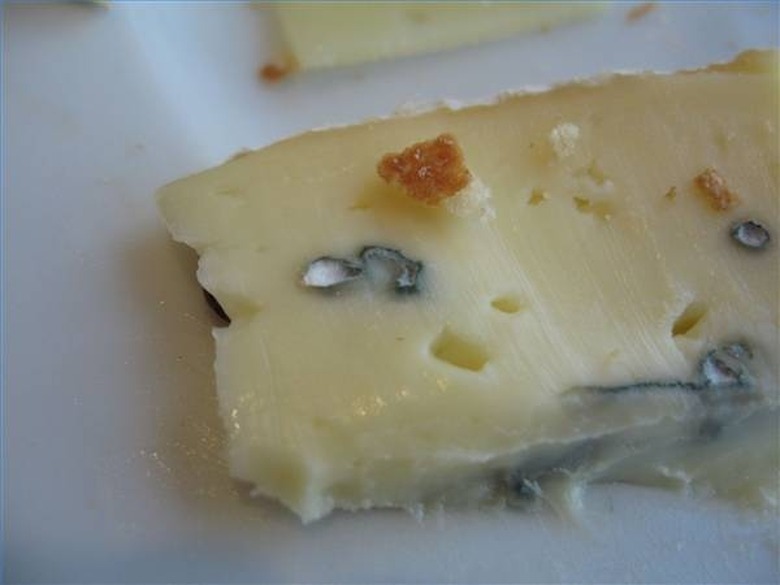Cheese Mold Experiments
Creating and observing moldy cheese is a popular science fair experiment. These types of experiments can help to discover what cheeses are most resistant to mold and why, a fact that is useful in numerous real-life situations. Campers and backpackers are among a few people who find this information invaluable. The rate of mold growth can be tracked and explained as the spores grow. Always exercise caution when growing mold, as some types are toxic.
Types of Cheese
Types of Cheese
Try purchasing several types of cheeses with different textures. For example, compare the hardness of Parmesan with a semisoft cheese like cheddar and a soft cheese like mozzarella. Keep the cheeses out of the refrigerator to promote the mold growth. Place them in a container where they can breathe, such as a bowl covered with a loose lid or plastic wrap, and set it out of the sunlight. Every day or so, check the cheese for mold growth. You can even use a ruler to measure the height of the mold as it grows.
Mold Resistance
Mold Resistance
There are a number of ways to influence the speed of mold growth. Try placing two or more samples of the same cheese from the same purchased packet in different conditions. For example, wrap a slice in a vinegar-soaked paper towel and leave one plain. Or try leaving a container in the refrigerator and one outside of it. You can also leave one container of cheese open and another sealed to see if air affects the growth. Setting up several of these ideas at once can give you a good overview of the best way to store cheese with and without refrigeration.
Comparing Molds
Comparing Molds
An interesting experiment is to compare the type and speed of mold growth on various types of foods. Bread is a popular choice for comparison. Set up the experiment in the same fashion as with the cheese, but add in a bowl with bread. You can also set up two bowls of bread, one plain and one with a touch of water in the bowl. The types of mold that grow on bread should grow at different rates from the molds on the cheese.
Explanations
Explanations
Mold grows for a number of reasons. There must be spores on the food. It is common for foods to have them, but in the rare instance that they are not on the food to begin with, mold will not grow. Moisture content is important, as well as pH levels. Higher-moisture cheeses tend to grow mold faster, but cheeses with a high pH level will fight off mold better. In the cheese-comparison test, the softer, higher-moisture cheeses should grow mold faster. In a test like the vinegar comparison, the high pH level of the vinegar should help to fight off mold growth. The bread will grow mold, but not as quickly as the cheese, since the moisture content is significantly less. Adding a little water to the bread bowl can change that condition.
References
Cite This Article
MLA
Myers, Josie. "Cheese Mold Experiments" sciencing.com, https://www.sciencing.com/cheese-mold-experiments-5163908/. 24 April 2017.
APA
Myers, Josie. (2017, April 24). Cheese Mold Experiments. sciencing.com. Retrieved from https://www.sciencing.com/cheese-mold-experiments-5163908/
Chicago
Myers, Josie. Cheese Mold Experiments last modified August 30, 2022. https://www.sciencing.com/cheese-mold-experiments-5163908/
